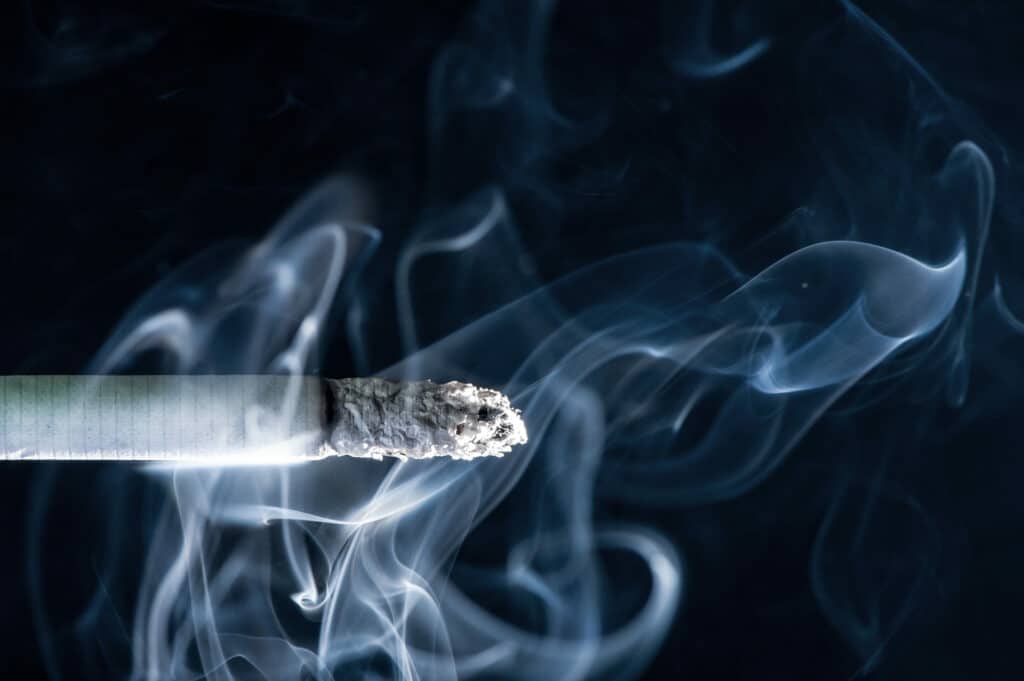Smoking: The Facts …This might just take your breath away
Around 10 million British adults smoke cigarettes, which accounts to approximately a sixth of the UK population.
22% of adult men and 19% of adult women are smokers. Amongst both sexes, the prevalence is highest in the 20 to 34 age group. In 1974, 51% of men and 41% of women smoked cigarettes – which accounted to nearly half of the adult population. Therefore, trends are changing. 22% of women and 27% of men are now ex-smokers.
Smoking is still the largest cause of premature death and preventable disease in the UK and attributes to approximately 100,000 deaths per year. Eventually, half of all smokers will die of a smoking related illness.
Tobacco can be consumed in various different forms, including cigarettes, pipes, smokeless tobacco products such as snuff and e-cigarettes, cigars, cigarillos, roll your own tobacco and more international products such as bidis and kreteks.
So how exactly does smoking harm the body?
Smoking cigarettes causes the inner layer of the blood vessels to become rather ‘sticky’ so to speak, making it easier for fatty material to stick to the vessels which ultimately can result in blockage. Smoking is therefore one of the leading contributors of heart disease and stroke.
Can smoking affect fertility?
Yes, smoking can affect the chances of conceiving in women and there is an association between smoking and reduced semen quality in men.
Aren’t smokeless tobacco products better for you?
This is a question that we get asked on a regular basis as doctors. The answer is that unfortunately, smokeless tobacco products are equally as addictive and damaging to health. They also quite often contain ingredients that can increase the risk of cancer of the head, neck, throat, oesophagus and oral cavity. The long-term effects of which are currently unknown, however it’s likely that they will almost certainly lead to some degree of respiratory disease.
What about shisha?
Shisha traditionally contains cigarette tobacco and therefore nicotine, tar, carbon monoxide and various other chemicals. During a typical shisha session, say between 30-60 minutes, research has shown that consumers are likely to inhale the same amount of smoke as approximately 100 cigarettes and contrary to popular belief, drawing tobacco through water does not make shisha less harmful than cigarettes.
Are the government doing enough to encourage people not to smoke?
As you’ve most likely seen, graphic pictorial warnings are now mandatory on all cigarette packaging and tobacco advertising is now at an all-time low. This along with increasing taxes on cigarettes, has certainly resulted in lower consumption rates.
If I stop smoking will my lungs recover to those of a non-smoker?
This depends entirely on a case-by-case basis, dependent on the number of years and quantity smoked.
Research shows that 20-30 minutes after stopping smoking, the heart rate and blood pressure can return to normal. After 12 hours the body can cleanse itself of the excess carbon monoxide that can accumulate after smoking. Even after day one of quitting, the risk of heart attack begins to decrease. Three days in, nicotine levels in the body become depleted causing nicotine withdrawal in long term smokers. It’s at around this time that most people will experience symptoms of withdrawal such as irritability, mood swings, headaches and cravings.
By one month a person’s lung function starts to improve and exercise can become easier. After nine months the lungs will start to significantly heal and the delicate hair like structures within the lungs known as the ‘cilia’ will begin to function normally again, to help push out mucus build up from the lungs. It’s by this time that many former smokers will notice an improvement in the frequency of lung infections that they acquire. After one year a person’s risk of heart disease will decrease to half that of a smoker. Following this the blood vessels will continue to heal and by 10-15 years the likelihood of developing coronary heart disease can become equivalent to that of a non-smoker. However, we must remember that smoking can lead to irreversible lung disease such as that of COPD and lung cancer.
So how should I go about quitting? Should I just go cold turkey?
As with any addiction, going cold turkey doesn’t usually work. Using weaning regimes containing nicotine replacement therapy tends to be the best way to tackle the problem. Cognitive behavioural therapy can also be beneficial. You can speak to your GP about trying medications such as bupropion and varenicline. Remember the first three weeks are usually the hardest, once you get over this hurdle it does get easier. Research has shown that changing habits and rewarding yourself can also be beneficial.
How does nicotine replacement therapy (NRT) work?
NRT is available in many different forms and can take effect even in a few seconds to minutes. They contain nicotine so they help with cravings without the harmful effects of smoke. Chewing gums and sprays tend to take effect very quickly, with nasal sprays, lozenges and patches taking a bit longer.
But can’t I just become addicted to NRT?
Well, the risk of dependence on NRT is actually quite small at around five percent. The safety however of the long-term use of NRT is still under investigation.
Remember that your GP is here to help you to stop smoking permanently. It’s a process that might take some time, but it will most certainly be worth it.
#medicalpracticemarylebone #stopsmoking #smokefree #quitsmoking #quitsmokingtoday #quitsmokingnow #quitsmokingcigarettes #quitsmokingtips #quitsmokingmotivation #quitsmokingforgood #quitsmokingtoday #quitsmokinginfo #nosmoking #smokefree #privateclinic #privatedoctor #privategp #privategplondon #privatehealthcare #gpharleystreet #health #healthylifestyle #menshealth #womenshealth #harleystreet


